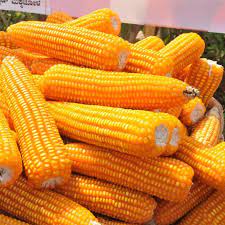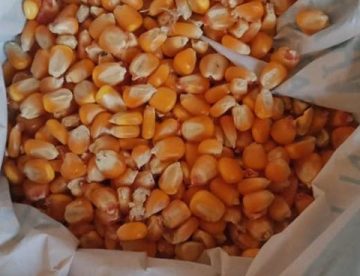Unveiling the Beauty of Yellow Maize Cultivars: A Comprehensive Guide to Varieties, Growth, and Nutritional Benefits

Introduction
Welcome to the vibrant world of yellow maize cultivars, where the golden hues of this remarkable crop not only paint picturesque landscapes but also contribute significantly to global agriculture and nutrition. In this comprehensive guide, we will delve into the diverse array of yellow maize cultivars, exploring their unique characteristics, growth patterns, and nutritional benefits. Join us on a journey through the fields of this remarkable crop, as we uncover the secrets behind its popularity and importance. Whether you’re a seasoned farmer, a food enthusiast, or someone curious about agriculture, this guide aims to provide valuable insights into yellow maize cultivars, making it an indispensable resource for all.
Section 1: The Spectrum of Yellow Maize Cultivars
Yellow maize, also known as golden maize, is a staple crop with a rich history and a multitude of cultivars that vary in color, size, and nutritional content. From the vivid golden hues of Dent maize to the pale yellow shades of Flints, each cultivar brings its own unique characteristics to the table. Dent maize, characterized by a dented kernel, is renowned for its versatility and widespread use in various food products. Flint maize, on the other hand, boasts a hard, colorful exterior, making it ideal for ornamental purposes and specialty foods. With an extensive spectrum of cultivars, yellow maize caters to a wide range of agricultural and culinary needs.
Section 2: Growth and Cultivation Practices
Achieving optimal yields of yellow maize involves a thorough understanding of growth and cultivation practices. Selecting the right cultivar, preparing the soil, and adopting sustainable farming practices are crucial steps in ensuring a successful harvest. Incorporating crop rotation and utilizing natural fertilizers can enhance soil fertility, promoting robust maize growth. Additionally, the strategic use of irrigation systems and pest control measures contributes to a healthy and thriving maize crop.
Farmers are encouraged to stay informed about regional climate patterns and adjust planting schedules accordingly. Implementing advanced technologies, such as precision agriculture and data-driven insights, can further optimize cultivation practices. By embracing these modern techniques, farmers can increase efficiency, reduce environmental impact, and ultimately enhance the quality of yellow maize harvests.
Section 3: Nutritional Benefits of Yellow Maize
Beyond its visual appeal and agronomic significance, yellow maize stands out for its impressive nutritional profile. Packed with essential nutrients, including carbohydrates, fiber, and various vitamins and minerals, yellow maize offers a wholesome dietary option. Its high antioxidant content, particularly in the form of carotenoids, contributes to maintaining eye health and supporting the immune system.
Furthermore, yellow maize is a rich source of energy, making it a staple food in many parts of the world. The presence of B-vitamins, such as thiamine and niacin, adds to its nutritional value, promoting overall well-being. As consumers increasingly prioritize health-conscious choices, the nutritional benefits of yellow maize make it a valuable addition to a balanced diet.
Section 4: Culinary Applications and Global Impact
The versatility of yellow maize extends beyond the agricultural field, influencing a myriad of culinary delights across the globe. From cornmeal and polenta to tortillas and cornbread, yellow maize is a staple ingredient in various cuisines. Its adaptability to different cooking methods and its ability to complement a wide range of flavors make it a favorite among chefs and home cooks alike.
Moreover, the global impact of yellow maize cultivation cannot be overstated. As a primary ingredient in many food products and as animal feed, yellow maize plays a crucial role in meeting the nutritional needs of both humans and livestock. Understanding its global significance sheds light on the interconnectedness of agriculture, food production, and overall societal well-being.
Conclusion
In conclusion, the world of yellow maize cultivars is as vast and diverse as the golden fields that grace our landscapes. From their unique characteristics to the nutritional benefits they offer, yellow maize cultivars are an essential component of global agriculture and food systems. By embracing sustainable cultivation practices, staying informed about the myriad cultivars available, and appreciating their culinary versatility, we can truly harness the full potential of yellow maize. As we navigate the intricate tapestry of yellow maize, let us celebrate the beauty, utility, and significance of this golden crop that continues to shape our way.
Unveiling the Beauty of Yellow Maize Cultivars

